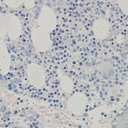Liquiritigenin attenuates high glucose-induced mesangial matrix accumulation, oxidative stress, and inflammation by suppression of the NF-κB and NLRP3 inflammasome pathways.
Parole chiave
Astratto
Oxidative stress, inflammation, and hyperglycemia are considered to play crucial roles in the pathogenesis and progression of diabetic nephropathy (DN). Liquiritigenin, one of the flavonoid compounds, has been shown to possess anti-inflammatory, anti-hyperlipidemic, and anti-oxidative properties. Our study aimed to explore the effects of liquiritigenin on high glucose (HG)-induced extracellular matrix (ECM) accumulation, oxidative stress and inflammatory response and delineate the underlying mechanism. In our study, glomerular mesangial cells (HBZY-1) were co-treated with various doses of liquiritigenin and HG. We found that HG, but not normal glucose or mannitol, promoted the proliferation of HBZY-1 cells, which was suppressed by liquiritigenin. Liquiritigenin inhibited HG-induced ECM accumulation in HBZY-1 cells by reducing the expressions and production of collagen IV (Col IV) and fibronectin (FN). Moreover, liquiritigenin attenuated HG-induced oxidative stress, as evidenced by the decreased MDA content and NADPH oxidase 4 (NOX4) expression, and the increased SOD activity in HBZY-1 cells. Liquiritigenin suppressed HG-induced inflammatory response, as demonstrated by the reduced expressions and secretion of interleukin (IL)-6 and IL-1β in HBZY-1 cells. Furthermore, we found that liquiritigenin inhibited HG-induced activation the nuclear factor-kappa B (NF-κB) and nod-like receptor protein 3 (NLRP3) inflammasome pathways. In conclusion, these results demonstrated that liquiritigenin attenuated HG-induced ECM accumulation, oxidative stress, and inflammation by suppression of the NF-κB and NLRP3 inflammasome pathways, suggesting that liquiritigenin might be a promising therapeutic agent for preventing the development of DN.


